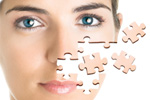Men's Health
Male Enhancement, How to Get an Erection, Increase Sperm Volume, Penis Enlargement, Premature Ejaculation, ...All Men's Health Men's Health
Women's Health
Breast Enhancement, Female Libido Enhancement, Female Sexual Arousal, ...All Women's Health Women's Health
Acne & Skin Care
Acne Treatment, Boils Treatment, Rosacea Treatment, Skin Pigmentation, Stretch Marks, Varicose Veins, ...All Acne & Skin Care Acne & Skin Care
Digestive & Urinary Systems
Constipation, Diarrhea, Hemorrhoid, Irritable Bowel Syndrome, Sensitive Digestion, ...All Digestive & Urinary Systems Digestive & Urinary Systems
Weight Loss
Blocking Carbs and Fat, Body Detoxification, Boost Metabolism, Fat Burning, Increase Energy Levels, Obesity Treatment, Suppressing AppetiteSports and Fitness
Improve Sports Performance, Increase Endurance, Increase Strength, Muscle Building Supplements, Muscle Recovery, Weight Gainers, Workout IntensityMental Health & Neurology
Anxiety, Bad Mood, Chronic Fatigue Syndrome, Depression, Insomnia, Memory Loss, Neuropathy, Obsessive-Compulsive Disorder, Stress, ...All Mental Health & Neurology Mental Health & Neurology
Beauty & Well-being
Bad Breath, Brittle Nails, Eyelash Growth, Gray Hair, Hair Removal, Nail Fungus, Teeth Whitening, Tattoo RemovalAdd to Bookmarks
How to Treat Female Adult Acne: A Complete Guide
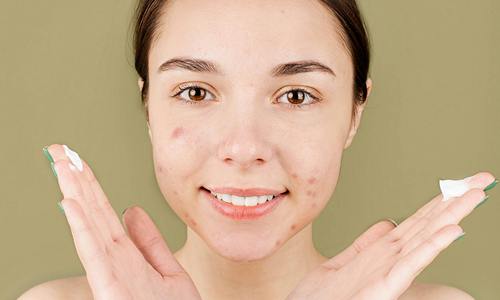 Women feel it every month - changing mood, stomach problems and acne. Hormones are the cause of it. Professionals are aware of the influence of hormones on female adult acne, but researches are rare in this sphere. Now the assumption that female adult acne is typical for nearly a half of all women during the last week before the period has a proven explanation.
Women feel it every month - changing mood, stomach problems and acne. Hormones are the cause of it. Professionals are aware of the influence of hormones on female adult acne, but researches are rare in this sphere. Now the assumption that female adult acne is typical for nearly a half of all women during the last week before the period has a proven explanation.What is interesting about female adult acne is the fact that they cannot be treated by the usual therapy methods. Topical antibiotics and topical retinoids cannot treat adult acne in this case. Several hints may help your physician determine hormonally-triggered female adult acne:
- This is first-time female adult acne, a condition found in adolescents;
- Acne breakouts before the menstrual period;
- A history of menstruating irregularly;
- Increased oiliness of your face;
- Excessive pilosis (hair overgrowth and hair in the abnormal places of body);
- Increased levels of androgens in your blood.
Female Adult Acne
Female adult acne caused by hormonal problems is typical for women between 20 and 25, but in some cases it appears in teenage females, and in women older than 30 it is the most problematic. Lesions may appear at the lower part of the face, sometimes on the back and chest. If female adult acne is influenced by hormones, there are only rare comedones. Why does female adult acne start? How to treat adult acne?They begin generally prior to adolescence (9-10 years old) when the adrenal glands start generating DHEAS (dihydroepiandrosterone sulfate), an androgen. Androgens are so called "male" hormones, though they are produced by a woman's body as well. Other "male" hormones are dehydrotestosterone (DHT) and testosterone. All of them work as stimulants for the sebaceous glands. The result of it is an intense surface skin fat (sebum) production.
This is the reason why such features as oily skin and acne are characteristic for teenagers. Obviously, as boys generate bigger amount of "male" hormones, the condition of acne is more severe in them. It is not easy to treat acne in teenagers as their hormone level is constantly increasing. At the first stage of the treatment process, a very noticeable result of acne products can encourage those suffering from acne.
Topical retinoids and benzoyl peroxide, sometimes together with an oral antibiotic, are usually used to treat teen acne. However, most often these medications, even coupled with an oral antibiotic, do not provide a long-term remedy for treating acne in teenagers because of the hormonal changes. Frequent adjustments to courses of treatment are often necessary. This is also true if you need to treat adult acne.
Causes of Female Adult Acne
Female adult acne can be attributed to various factors, often interconnected and unique to women. Understanding these causes is essential for effective treatment.- Hormonal Fluctuations: One of the most significant contributors to adult acne in women is hormonal changes. The menstrual cycle, pregnancy, and conditions like polycystic ovary syndrome (PCOS) can lead to fluctuations in hormones such as estrogen and progesterone. These fluctuations often increase oil production in the skin, leading to clogged pores and acne breakouts, particularly in the lower face and jawline.
- Stress: High-stress levels can trigger the body's production of androgens, which are male hormones that can stimulate the sebaceous (oil) glands in the skin. Increased oil production can result in more acne. Stress can also worsen existing acne, making it more challenging to manage.
- Diet: What you eat can significantly impact your skin. Diets high in refined carbohydrates, sugars, and dairy products have been linked to acne. These foods can cause spikes in insulin levels, which may promote inflammation and increase oil production, leading to breakouts.
- Skin Care Products: Many women use a variety of skincare and makeup products that may not be suitable for their skin type. Products that are comedogenic (pore-clogging) can exacerbate acne. It's important to choose non-comedogenic products, especially for those with oily or acne-prone skin.
- Genetics: Family history can also play a role in the development of acne. If women in your family have experienced adult acne, you may be at a higher risk of developing it yourself.
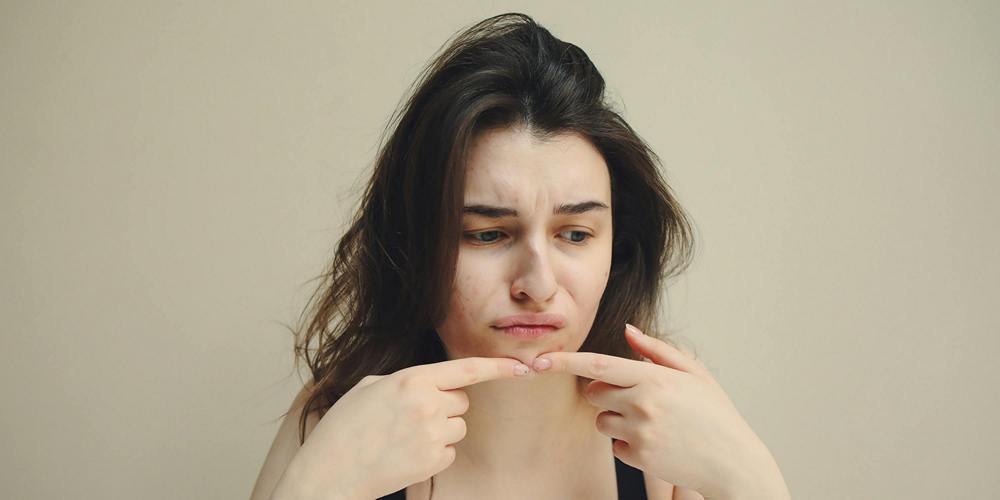
According to Cleveland Clinic:
By understanding these underlying causes, women can make informed choices about their skincare routines and lifestyle, leading to more effective treatment and management of acne.
Symptoms and Types of Acne
Female adult acne can manifest in various forms, each with distinct characteristics and symptoms. Understanding these types can help women identify their specific condition and seek appropriate treatment.Hormonal Acne
This type often occurs in cycles, typically linked to hormonal fluctuations associated with the menstrual cycle. Hormonal acne is commonly found around the chin, jawline, and lower cheeks. It usually appears as deep, painful cysts that can linger for weeks or even months.Cystic Acne
Cystic acne is a severe form of acne that results in large, painful lumps beneath the skin. These cysts are often inflamed and can be tender to the touch. Cystic acne may not respond well to standard over-the-counter treatments, making it crucial for women experiencing this type to consult a dermatologist for more aggressive treatment options.Papules and Pustules
These are common forms of acne that can appear on the face and body. Papules are small, raised bumps that may be red and inflamed but do not contain pus. Pustules, on the other hand, are similar to papules but are filled with pus, giving them a white or yellow appearance. Both types can be triggered by excess oil production, clogged pores, and bacteria.Milia
While not always classified as acne, milia are small, white cysts that can appear on the face, particularly around the eyes. They occur when keratin becomes trapped beneath the skin's surface. Milia can be mistaken for whiteheads and often require professional extraction.Scarring
One of the significant concerns for women with acne is the potential for scarring. Acne scars can take various forms, including atrophic (depressed) scars and hypertrophic (raised) scars. Early intervention and proper treatment can help minimize the risk of scarring.Recognizing the different types of acne is crucial for effective treatment. Each type requires tailored approaches, so understanding these variations can empower women to take control of their skin health.
Diagnosis of Female Adult Acne
Diagnosing female adult acne involves a comprehensive approach that considers various factors to understand the underlying causes and recommend effective treatments. Here's how dermatologists typically diagnose this condition.- Medical History: The first step in diagnosing adult acne is a thorough medical history. Dermatologists will ask about your acne symptoms, their duration, and when they first appeared. Additionally, they will inquire about any previous treatments you've tried, hormonal changes (like menstrual cycles or pregnancies), and other medical conditions that may contribute to acne, such as polycystic ovary syndrome (PCOS).
- Physical Examination: A physical examination is essential to assess the severity and type of acne present. The dermatologist will evaluate the affected areas of your skin, looking for specific characteristics of the acne, such as its location, type (like cystic or hormonal), and whether there are any signs of scarring. This examination helps differentiate between types of acne and can reveal if other skin conditions might be involved.
- Hormonal Assessment: Since hormonal fluctuations play a significant role in female adult acne, your dermatologist may recommend hormonal assessments. This could involve blood tests to check hormone levels, particularly androgens, which can influence oil production in the skin. For women experiencing irregular menstrual cycles or other signs of hormonal imbalance, these tests can provide crucial insights.
- Skin Type Evaluation: Understanding your skin type is vital for effective acne treatment. Oily, dry, or combination skin types may respond differently to various treatments. Dermatologists can help identify your skin type and suggest appropriate products that won't exacerbate acne.
- Treatment Plan: Once a diagnosis is established, the dermatologist will create a personalized treatment plan tailored to your specific needs. This plan may include topical treatments, oral medications, lifestyle modificati1ons, and recommendations for skincare products that suit your skin type.
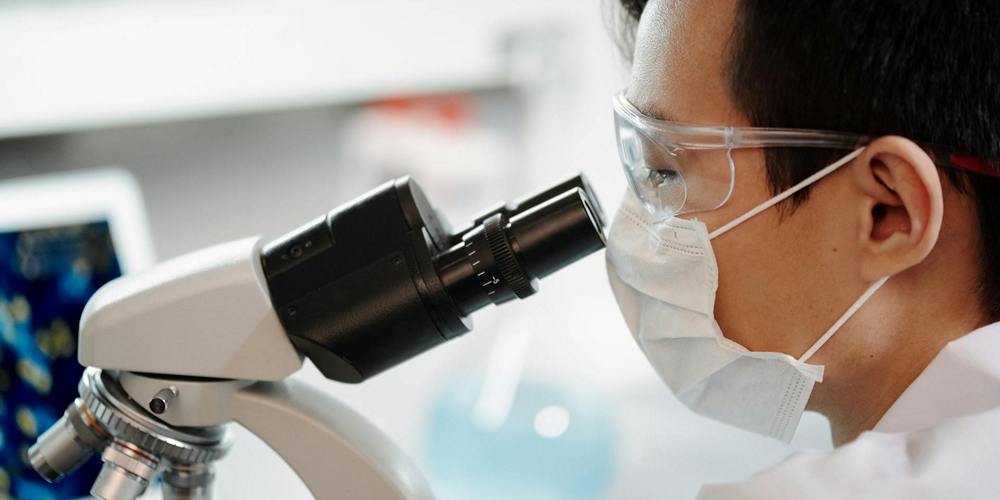
According to National Institutes of Health:
By taking a holistic approach to diagnosis, dermatologists can identify the root causes of female adult acne and develop targeted strategies for effective management, empowering women to regain control of their skin health.
How to Treat Female Adult Acne?
A lot of women don't have teen acne but many of them begin to suffer from female adult acne and look for the way to treat adult acne at the age of 20 or 30, experiencing persistent onsets the week previous to their period. The reason for this is estrogen level which is high at the middle of period and it decreases further. After ovulation takes place, a female body starts producing progesterone, the hormone, the role of which is to stimulate the sebaceous glands to produce more skin oil. And more skin oil means more female adult acne.Acne in Pregnant Women
Pregnant women experience hormonal changes as well, so female adult acne is also typical for some pregnant women. They also have to treat adult acne. The peak of the activity of the sebaceous glands is the last pregnancy trimester, and female adult acne is quite typical during this time. Menopause is also a dangerous time for acne because level of estrogen decreases and testosterone remains the major hormone.If a woman has female adult acne that worsens during her monthly cycles she'd better be aware of the fact that she will not grow out of it. But she still can treat adult acne and achieve most successful results with a female adult acne treatment plan developed by her dermatologist.
Treatment Options for Female Adult Acne
Treating female adult acne involves a multifaceted approach that combines various therapies tailored to individual needs. Here's an overview of the most effective treatment options available:- Topical Treatments: Over-the-counter (OTC) topical treatments are often the first line of defense for managing acne. Ingredients like benzoyl peroxide, salicylic acid, and alpha hydroxy acids (AHAs) can help reduce inflammation, unclog pores, and prevent new breakouts. Retinoids, which are vitamin A derivatives, are also highly effective in promoting cell turnover and preventing clogged pores. These treatments can be used alone or in combination to target different aspects of acne.
- Oral Medications: For moderate to severe cases of acne, dermatologists may prescribe oral medications. Antibiotics, such as tetracycline or doxycycline, can help reduce inflammation and bacterial growth. Hormonal treatments, like birth control pills, can regulate hormones and reduce oil production, making them particularly beneficial for women with hormonal acne. In more severe cases, isotretinoin may be prescribed. This potent medication can significantly reduce oil production and is effective for cystic acne, but it requires close monitoring due to potential side effects.
- Natural Herbal Products: Natural herbal remedies can also play a crucial role in treating female adult acne. Ingredients such as tea tree oil, known for its antibacterial properties, can be applied topically to reduce inflammation and help clear existing breakouts. Aloe vera is another effective option; it soothes irritated skin and has healing properties that can reduce redness and scarring. Green tea extract, rich in antioxidants, can help decrease oil production and inflammation when applied topically or consumed as a beverage. Additionally, burdock root and dandelion are often used in herbal supplements to detoxify the body and improve skin health.
- Lifestyle Modifications: Simple lifestyle changes can also play a crucial role in managing adult acne. Maintaining a balanced diet rich in whole foods while avoiding processed foods and dairy can help reduce inflammation. Staying hydrated and practicing stress-reduction techniques, such as yoga or meditation, can also positively impact skin health.
- Skincare Routine: Developing a consistent skincare routine is essential. Cleansing the skin twice daily with gentle, non-comedogenic products can help remove excess oil and impurities without over-drying the skin. Additionally, exfoliating regularly can help prevent clogged pores.
- Professional Treatments: In-office treatments, such as chemical peels, laser therapy, and light therapy, can provide additional benefits for acne management. These procedures can target inflammation, reduce scarring, and improve overall skin texture.
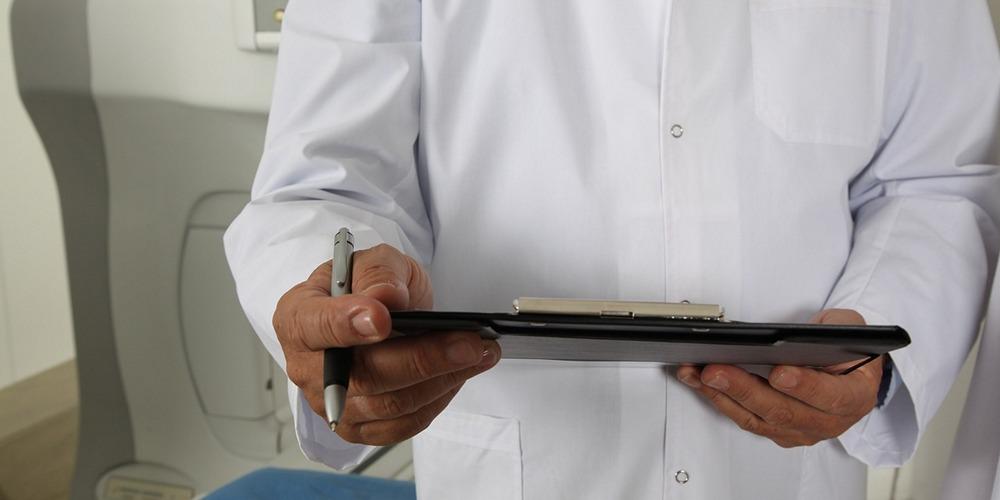
According to Mayo Clinic:
Finding the right combination of treatments may take time and patience. Consulting with a dermatologist can help create a personalized plan that addresses specific concerns, allowing women to regain confidence in their skin.
Preventive Measures for Female Adult Acne
Preventing female adult acne involves a combination of lifestyle changes, skincare routines, and awareness of individual triggers. Here are several effective strategies to help reduce the likelihood of acne breakouts:- Maintain a Consistent Skincare Routine: Establishing a daily skincare regimen is crucial for keeping skin clean and healthy. Use a gentle cleanser to wash your face twice daily, ideally in the morning and evening. Follow up with a non-comedogenic moisturizer to maintain hydration without clogging pores. Incorporating exfoliation 1-2 times a week can also help remove dead skin cells and prevent clogged pores.
- Choose Non-Comedogenic Products: When selecting makeup and skincare products, opt for non-comedogenic formulas designed not to clog pores. Look for products labeled as "oil-free" and "non-acnegenic." This applies to moisturizers, sunscreens, and cosmetics, as using the right products can significantly reduce breakouts.
- Keep Hair Clean and Off the Face: Oily hair can transfer excess sebum to the skin, leading to clogged pores. Regularly washing your hair and avoiding hairstyles that keep hair in contact with your face can help prevent breakouts. Using hair products that are free from oils can also minimize the risk.
- Manage Stress Levels: Stress can trigger hormonal fluctuations that contribute to acne. Practicing stress-reduction techniques, such as yoga, meditation, or regular exercise, can help manage stress levels and improve skin health.
- Stay Hydrated: Drinking plenty of water is essential for maintaining overall health and keeping skin hydrated. Proper hydration can help your skin function optimally, reducing the likelihood of dryness and irritation that can exacerbate acne.
- Healthy Diet Choices: A balanced diet rich in fruits, vegetables, whole grains, and lean proteins can support skin health. Limiting processed foods, sugary snacks, and dairy products may also help reduce acne flare-ups for some women. Foods rich in antioxidants and omega-3 fatty acids can be particularly beneficial.
- Avoid Touching the Face: Frequent touching of the face can transfer bacteria and oil from your hands to your skin, leading to breakouts. Be mindful of this habit and avoid resting your chin or cheeks on your hands.
- Regular Dermatologist Visits: Regular check-ups with a dermatologist can help monitor skin health and catch potential issues early. They can offer tailored advice and adjust treatment plans as needed to keep acne at bay.
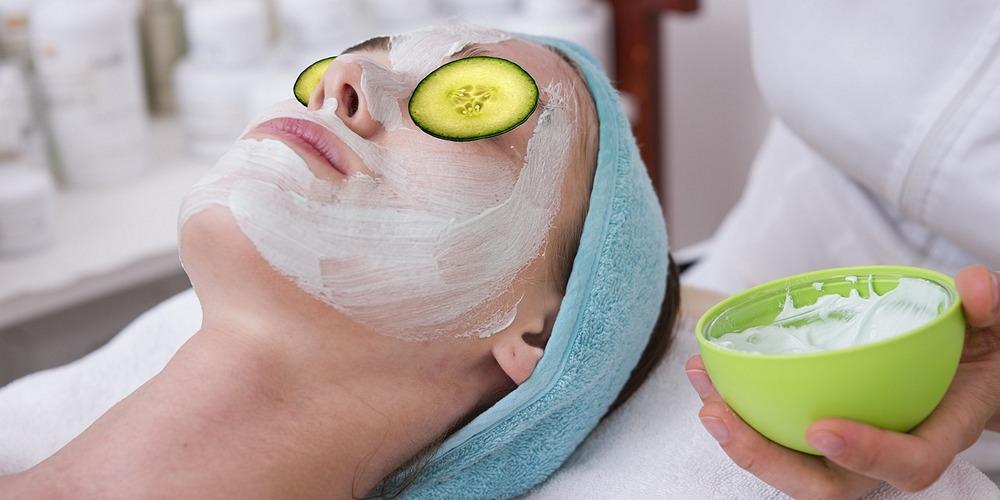
According to WebMD:
By incorporating these preventive measures into daily life, women can significantly reduce the risk of developing acne, promoting healthier, clearer skin. Being proactive about skincare and overall well-being is key to managing and preventing female adult acne.
Conclusion: Manage Female Adult Acne
Female Adult Acne
Female adult acne is a common yet often distressing condition that affects many women at different stages of life. Understanding the causes, treatment options, and preventive measures is crucial for effectively managing this condition. By empowering women with knowledge and resources, we can foster a proactive approach to skincare and overall well-being.Effective treatments, including topical medications, oral medications, and natural remedies, offer diverse options tailored to individual skin types and needs. Each woman's experience with acne is unique, and it may require a combination of treatments to achieve the best results.
Natural Remedies
Incorporating natural remedies, such as tea tree oil and aloe vera, alongside conventional treatments, can provide holistic benefits. Additionally, dietary choices, stress management, and a consistent skincare routine play vital roles in preventing acne flare-ups and promoting healthy skin.It's essential for women to remember that seeking help from healthcare professionals, such as dermatologists, can be beneficial. Regular consultations can provide tailored treatment plans, help monitor skin changes, and allow for adjustments as necessary. Women should never hesitate to discuss their concerns and explore different treatment options until they find what works best for them.
Managing Female Adult Acne
Ultimately, managing female adult acne is about more than just treating breakouts; it's about building confidence and self-esteem. By adopting a comprehensive approach to skincare and health, women can regain control over their skin and feel empowered in their journey. With the right knowledge and resources, achieving clear, healthy skin is an attainable goal. Embracing this journey can lead to not only improved skin health but also enhanced overall quality of life.Featured Female Adult Acne Treatment
Struggling with acne? Discover natural treatments that can help reduce and prevent breakouts. Explore effective, gentle solutions for clearer skin without harsh chemicals. Explore the natural options to treat female acne naturally.Learn How to Treat Female Acne Naturally
Related Articles
Guide to Choosing an Acne Treatment
When you seek for a good acne treatment, you usually want to find a really working and not very expensive product. But nowadays market is so overfull that it may seem impossible to find your acne treatment. The following guide to choosing an acne treatment can make your life a bit easier. Simply answer the following questions when you are choosing an acne treatment and you will see if this or that particular product is worth purchasing.
Basic Skin Care Herbs
Some herbs may be very helpful in taking care of your skin. These basic skin care herbs may help cope with eczema, acne, skin rashes and some other skin problems. They can also restore skin smoothness and prevent certain skin diseases. Their proven effect will help you maintain clean and healthy skin, preventing growth of skin problems in the future. However, these ingredients are not something you would like to mix and prepare in your kitchen, trying to make a herbal skin care product at home.
Last Updated: 2025-11-14

